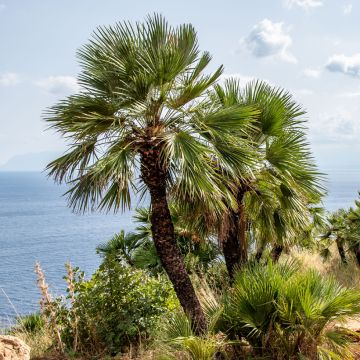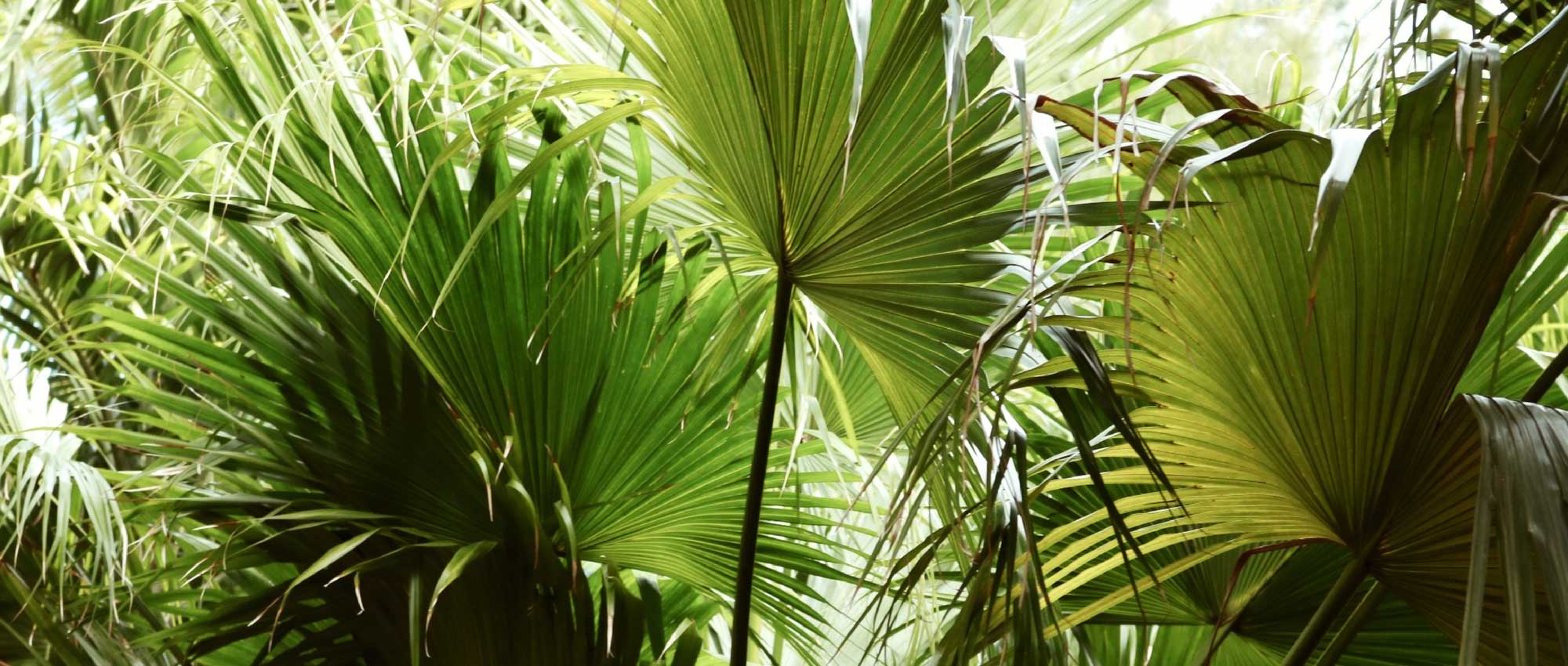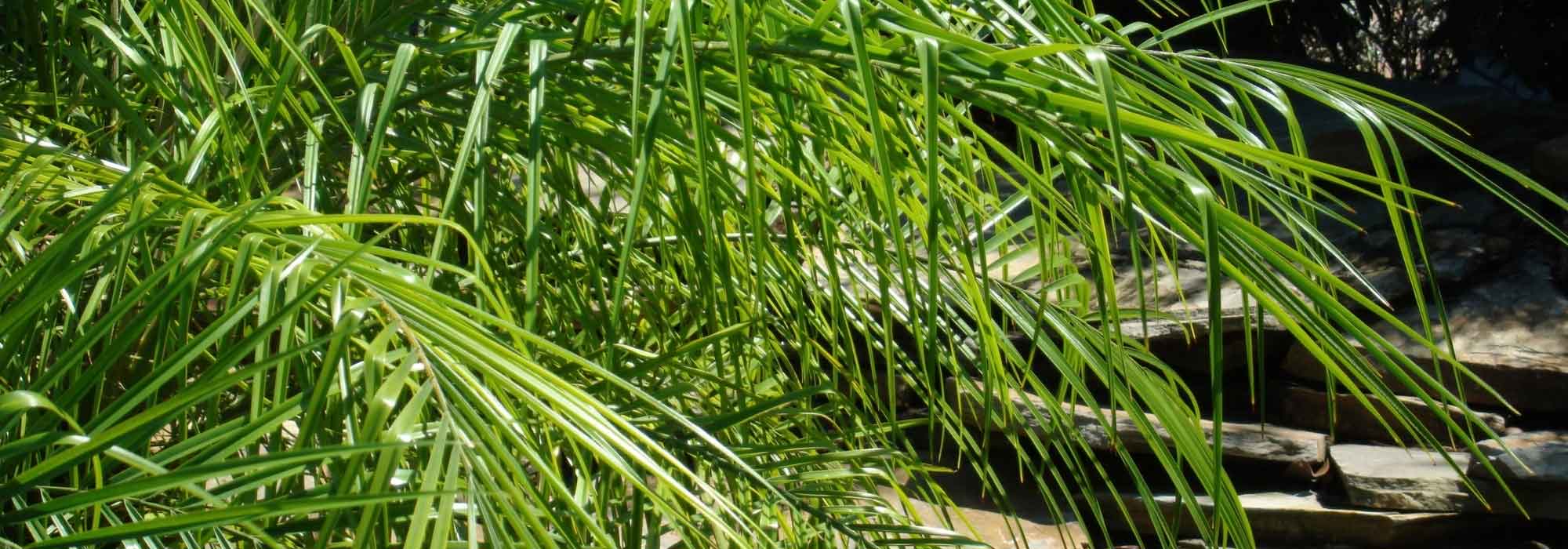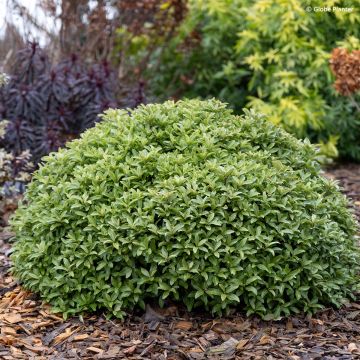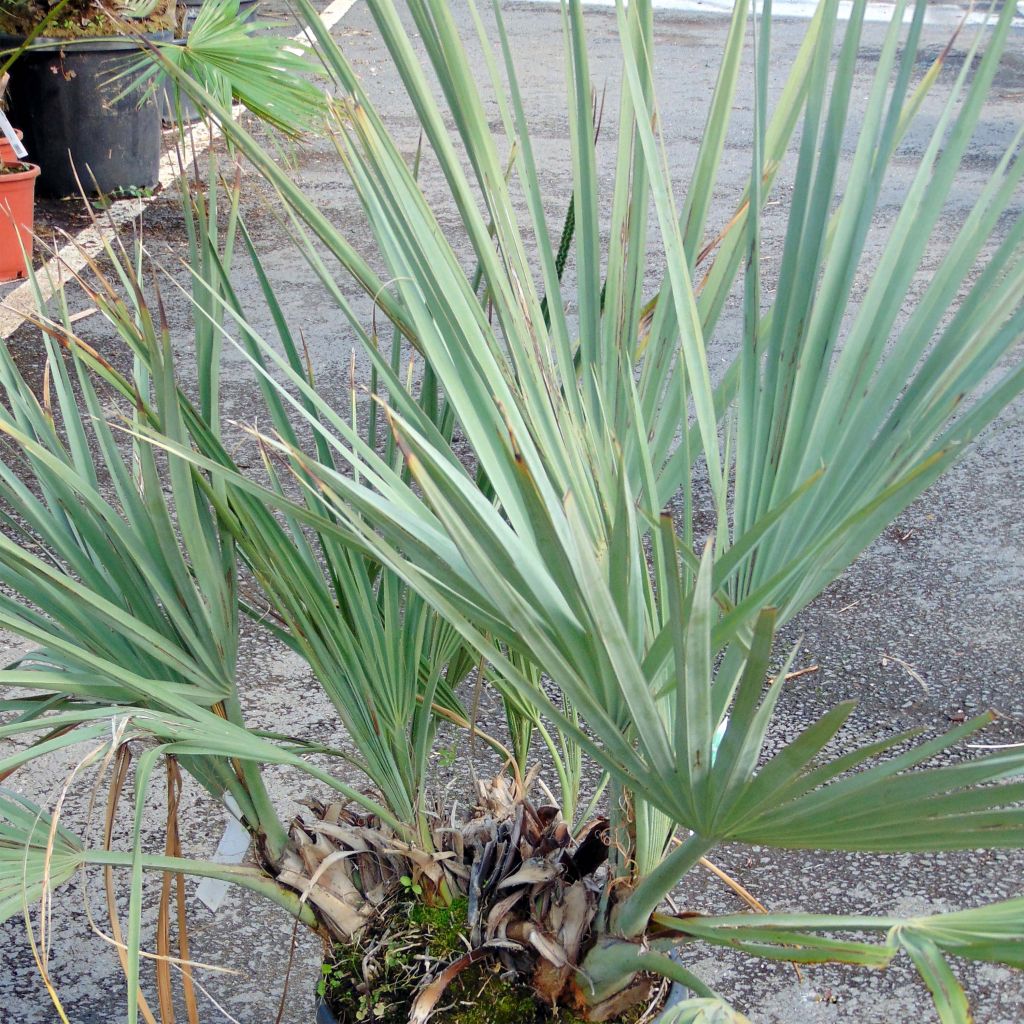

Nannhorrops ritchiana Silver - Palmier Mazari
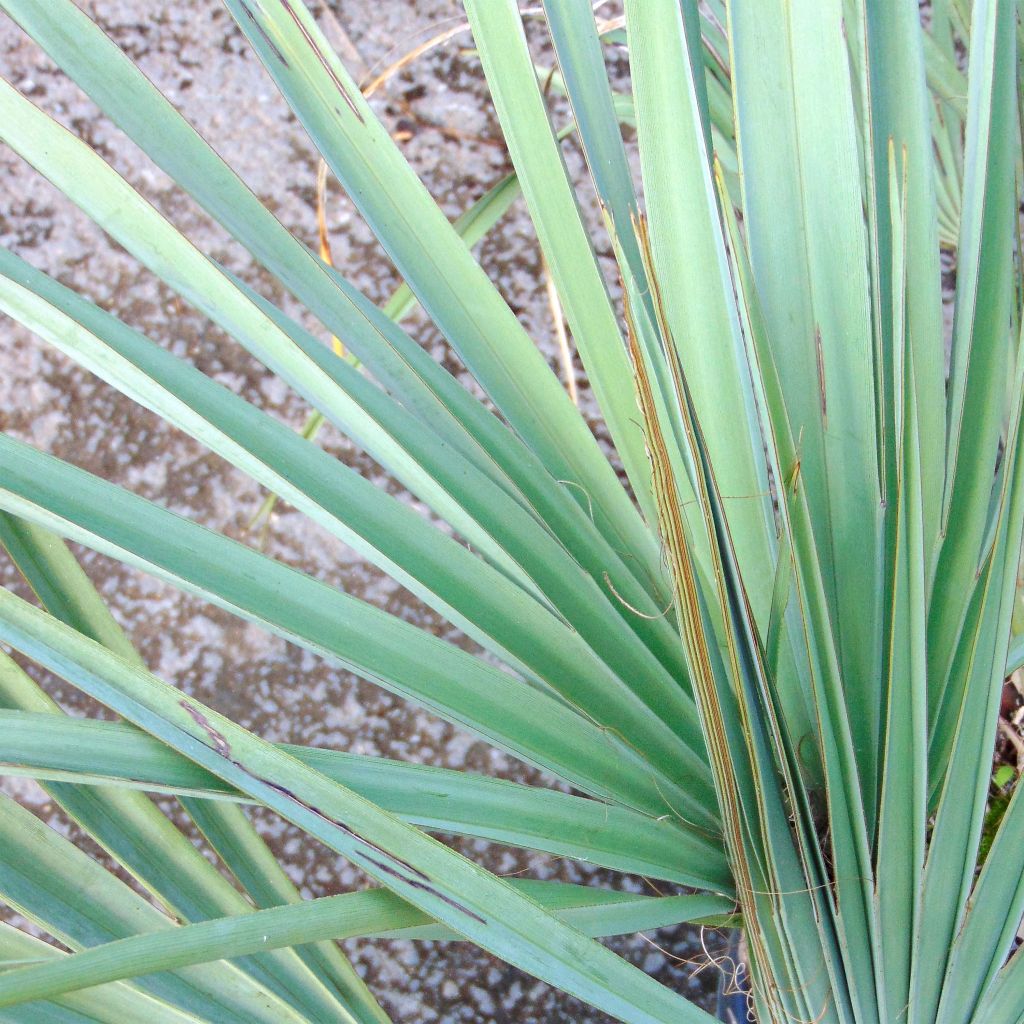

Nannhorrops ritchiana Silver - Palmier Mazari
Nannorrhops ritchiana Silver
Nannorrhops ritchiana Silver (Iran Siver)
Silver Mazari Palm
beautiful plant
michel G., 27/04/2017
Special offer!
Receive a €20 voucher for any order over €90 (excluding delivery costs, credit notes, and plastic-free options)!
1- Add your favorite plants to your cart.
2- Once you have reached €90, confirm your order (you can even choose the delivery date!).
3- As soon as your order is shipped, you will receive an email containing your voucher code, valid for 3 months (90 days).
Your voucher is unique and can only be used once, for any order with a minimum value of €20, excluding delivery costs.
Can be combined with other current offers, non-divisible and non-refundable.
Why not try an alternative variety in stock?
View all →This plant carries a 24 months recovery warranty
More information
We guarantee the quality of our plants for a full growing cycle, and will replace at our expense any plant that fails to recover under normal climatic and planting conditions.

Would this plant suit my garden?
Set up your Plantfit profile →
Description
Nannorrhops ritchiana Silver, known as the Mazari Palm, is sometimes called the Iranian Palm due to its origins. It is an exceptional and paradoxical plant, both extremely resistant and very sensitive to its environment. It slowly devleops a trunk that sags and branches over time, while giving birth to small shoots. Its rigid fronds, carried by a petiole whose base emerges from an orange wool, stand upright like large vertical silver fans. In open ground, Nannorrhops cannot tolerate wet, humid, and cold climates. They are, however, excellent plants for exotic gardens with warm climates and arid zones, as evidenced by the two imposing specimens introduced in 1871 at the Thuret Botanical Garden located near Antibes.
Nannorrhops ritchiana (synonym Chamaerops ritchieana, Nannorrhops naudeniana) belongs to the Arecaceae family. The name of the genus comes from the Greek nannos meaning 'dwarf', and rhops meaning 'shrub'. This refers to the plant's habit in its original environment. It is native to semi-desert areas of Afghanistan, Pakistan and Iran, and grows up to 1800m (5905ft) altitude, where it experiences cold winters and is regularly covered in snow. This palm can slowly reach a height of 10 to 12m (33 to 39ft). It is carried by one or more thick, straight, massive false trunks (stipes), sometimes reaching 25cm (10in) in diameter. The grey trunks bear the remains of dried old leaves. Throughout its growth, the trunk sags at the base and regularly divides in two at its tip, producing what are called dichotomous branches. Its branches form new trunks, which can have the remains of the old split petioles. The foliage is arranged in terminal crowns at the end of each trunk, and can eventually reach a span of 6m (20ft). Each crown consists of 10 to 20 slightly palmate leaves, arranged in a fan around a central axis. Silver's leaves measure 70cm (28in) to 1m (3ft) wide. They have a beautiful silver-grey colour. The lower surface is slightly glaucous. They are divided into 30 rigid segments and are carried by a petiole up to 1m (3ft) long, covered at its base with an orange fibre that resembles felted wool.
A spectacular flowering occurs on very old individuals. Each crown of fronds is semelparous, meaning it dies after flowering. However, it is replaced, on the same trunk, by a new crown. The branched inflorescence slowly emerges from the heart of the mature crown and can measure 2m (7ft) long. It bears a large quantity of cream-white flowers that will give birth, in favourable climates, to round brown fruits, each containing a round brown seed 1 to 1.5cm (1in) in diameter that germinates quite easily.
Highly appreciated as a specimen to be planted in isolation in coastal gardens, especially in dry and hot climates. Along with Chamaerops hystrix and Chamaerops humilis, Nannorrhops ritchiana Silver is one of the hardiest ornamental palm species in theory. This factor actually depends a lot on soil drainage and ambient humidity. Indispensable and prestigious in mild climates, it can also be grown elsewhere in a large container, which can be stored indoors during winter in a cool, bright and airy place, with a dry atmosphere. It will be superb when planted near a doorway, on either side of a gate, or planted in isolation. Like Jubaea chilensis, Eucalyptus and large mimosa trees, it forms the typical backdrop of exotic gardens. Enthusiasts of sculptural plants can plant it with the Blue Palm of Mexico (Brahea armata), Siberian Nolina, Agave ovatifolia, Dasylirion wheeleri, Yucca rigida, and other plants that are well adapted to arid conditions.
Nannorrhops ritchiana is successfully cultivated in several places around the world and in different climates such as those of Florida, California, Texas, Italy, France, and Venezuela, which gives a good indication of its bioclimatic preferences.
Nannorrhops ritchiana Silver in pictures
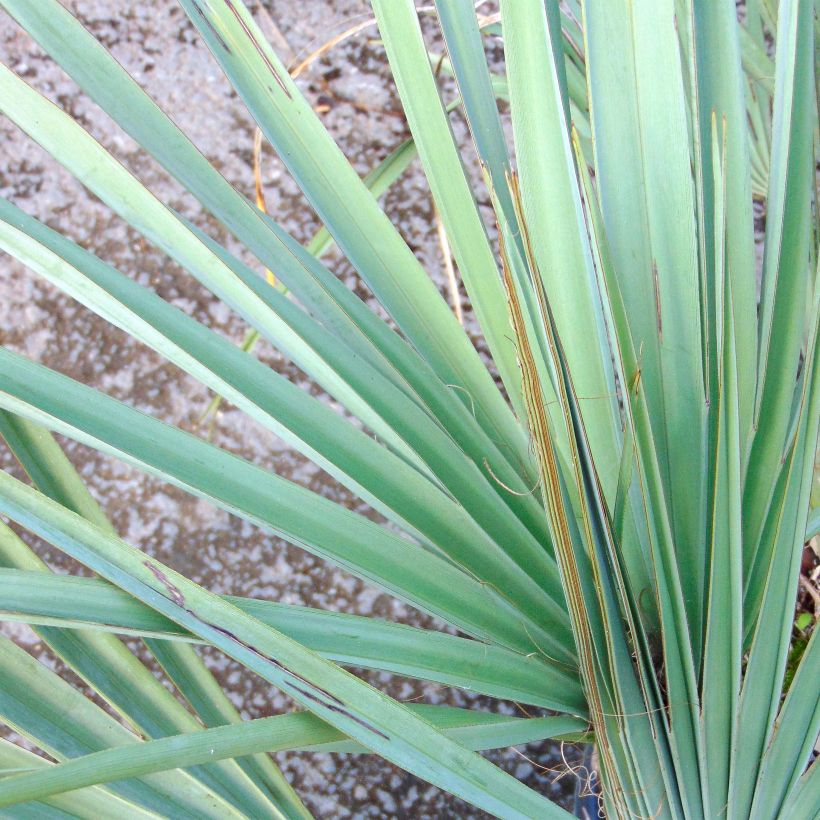

Plant habit
Flowering
Foliage
Botanical data
Nannorrhops
ritchiana
Silver (Iran Siver)
Arecaceae
Silver Mazari Palm
Middle East
Other Palm trees A to Z
View all →Planting and care
This palm tree has a slow growth rate, especially during its first 10 years. It requires sunlight and warmth to promote faster growth. Plant Nannhorrops ritchiana Silver in open ground in not too humid and not too harsh climates, or in a very large pot in other regions. Plant it in very well-drained, poor soil, which is rich in sand and stones. It will grow in poor soil which is dry on the surface. It is indifferent to the nature of the soil, but shows a preference for poor and filtering soils. It tolerates drought very well once established, but some watering in summer promotes growth. The ideal is to plant it in poor soil, retaining little water: a mixture composed mostly of coarse sand, gravel, supplemented with compost and garden soil. Position it in a very sunny spot. Protect it from cold and dry winds, and even winter rains. Regularly water for the first 3 years, especially if the summer is dry. Easy to grow, it requires little maintenance except for pruning the oldest leaves close to the stem.
It should be noted here that its hardiness depends a lot on the winter dryness of the soil. It can reasonably be assumed that a well-established plant, in a filtering soil, will withstand short frosts of around -12 to -15°C (10.4 to 5°F). It is also possible that a snowy blanket is an additional protective factor for this plant.
Propagate by sowing fresh seeds, which germinate easily after 2 months at 25 to 28°C (77 to 82.4°F).
Planting period
Intended location
Care
Planting & care advice
-
, onOrder confirmed
Reply from on Promesse de fleurs
Similar products
Haven't found what you were looking for?
Hardiness is the lowest winter temperature a plant can endure without suffering serious damage or even dying. However, hardiness is affected by location (a sheltered area, such as a patio), protection (winter cover) and soil type (hardiness is improved by well-drained soil).

Photo Sharing Terms & Conditions
In order to encourage gardeners to interact and share their experiences, Promesse de fleurs offers various media enabling content to be uploaded onto its Site - in particular via the ‘Photo sharing’ module.
The User agrees to refrain from:
- Posting any content that is illegal, prejudicial, insulting, racist, inciteful to hatred, revisionist, contrary to public decency, that infringes on privacy or on the privacy rights of third parties, in particular the publicity rights of persons and goods, intellectual property rights, or the right to privacy.
- Submitting content on behalf of a third party;
- Impersonate the identity of a third party and/or publish any personal information about a third party;
In general, the User undertakes to refrain from any unethical behaviour.
All Content (in particular text, comments, files, images, photos, videos, creative works, etc.), which may be subject to property or intellectual property rights, image or other private rights, shall remain the property of the User, subject to the limited rights granted by the terms of the licence granted by Promesse de fleurs as stated below. Users are at liberty to publish or not to publish such Content on the Site, notably via the ‘Photo Sharing’ facility, and accept that this Content shall be made public and freely accessible, notably on the Internet.
Users further acknowledge, undertake to have ,and guarantee that they hold all necessary rights and permissions to publish such material on the Site, in particular with regard to the legislation in force pertaining to any privacy, property, intellectual property, image, or contractual rights, or rights of any other nature. By publishing such Content on the Site, Users acknowledge accepting full liability as publishers of the Content within the meaning of the law, and grant Promesse de fleurs, free of charge, an inclusive, worldwide licence for the said Content for the entire duration of its publication, including all reproduction, representation, up/downloading, displaying, performing, transmission, and storage rights.
Users also grant permission for their name to be linked to the Content and accept that this link may not always be made available.
By engaging in posting material, Users consent to their Content becoming automatically accessible on the Internet, in particular on other sites and/or blogs and/or web pages of the Promesse de fleurs site, including in particular social pages and the Promesse de fleurs catalogue.
Users may secure the removal of entrusted content free of charge by issuing a simple request via our contact form.
The flowering period indicated on our website applies to countries and regions located in USDA zone 8 (France, the United Kingdom, Ireland, the Netherlands, etc.)
It will vary according to where you live:
- In zones 9 to 10 (Italy, Spain, Greece, etc.), flowering will occur about 2 to 4 weeks earlier.
- In zones 6 to 7 (Germany, Poland, Slovenia, and lower mountainous regions), flowering will be delayed by 2 to 3 weeks.
- In zone 5 (Central Europe, Scandinavia), blooming will be delayed by 3 to 5 weeks.
In temperate climates, pruning of spring-flowering shrubs (forsythia, spireas, etc.) should be done just after flowering.
Pruning of summer-flowering shrubs (Indian Lilac, Perovskia, etc.) can be done in winter or spring.
In cold regions as well as with frost-sensitive plants, avoid pruning too early when severe frosts may still occur.
The planting period indicated on our website applies to countries and regions located in USDA zone 8 (France, United Kingdom, Ireland, Netherlands).
It will vary according to where you live:
- In Mediterranean zones (Marseille, Madrid, Milan, etc.), autumn and winter are the best planting periods.
- In continental zones (Strasbourg, Munich, Vienna, etc.), delay planting by 2 to 3 weeks in spring and bring it forward by 2 to 4 weeks in autumn.
- In mountainous regions (the Alps, Pyrenees, Carpathians, etc.), it is best to plant in late spring (May-June) or late summer (August-September).
The harvesting period indicated on our website applies to countries and regions in USDA zone 8 (France, England, Ireland, the Netherlands).
In colder areas (Scandinavia, Poland, Austria...) fruit and vegetable harvests are likely to be delayed by 3-4 weeks.
In warmer areas (Italy, Spain, Greece, etc.), harvesting will probably take place earlier, depending on weather conditions.
The sowing periods indicated on our website apply to countries and regions within USDA Zone 8 (France, UK, Ireland, Netherlands).
In colder areas (Scandinavia, Poland, Austria...), delay any outdoor sowing by 3-4 weeks, or sow under glass.
In warmer climes (Italy, Spain, Greece, etc.), bring outdoor sowing forward by a few weeks.


































